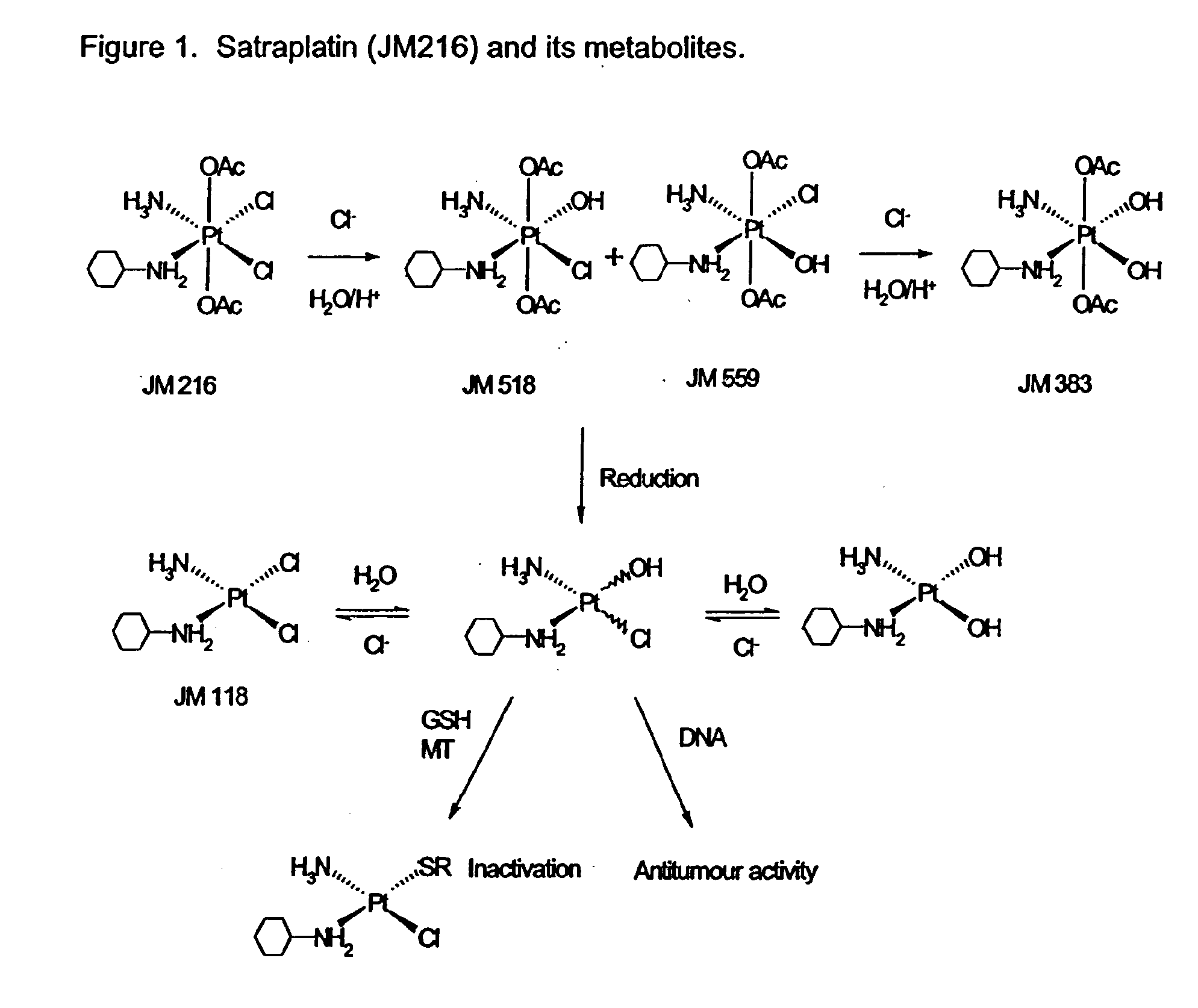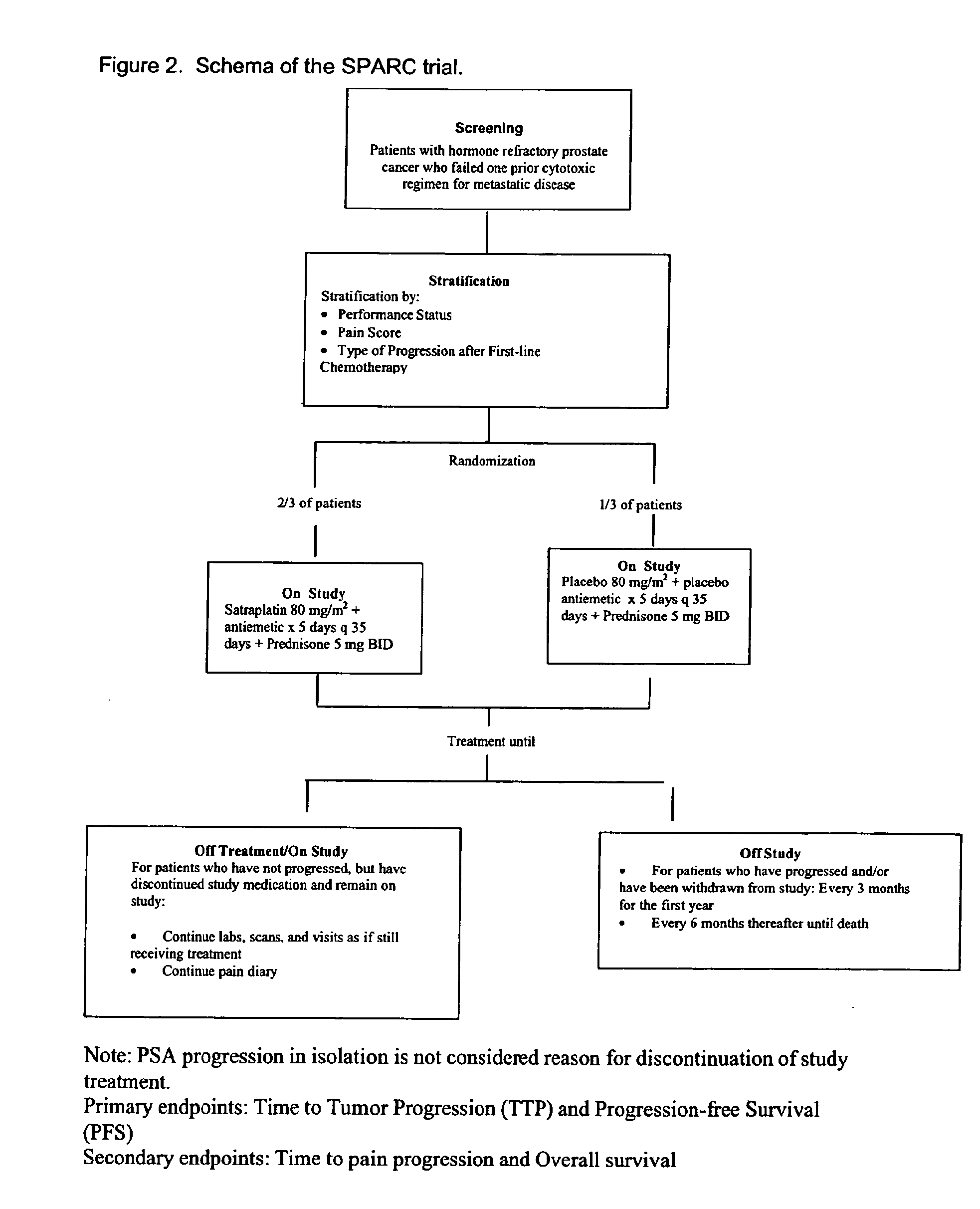Treatment of pain using satraplatin
a technology of satraplatin and satraplatin injection, which is applied in the direction of biocide, animal repellents, drug compositions, etc., can solve the problems of insufficient systemic treatment, inability to clearly achieve systemic treatment, and pain in the bone, so as to improve the prospects of life-expectancy or life-quality, and improve the quality of life
- Summary
- Abstract
- Description
- Claims
- Application Information
AI Technical Summary
Benefits of technology
Problems solved by technology
Method used
Image
Examples
Embodiment Construction
Definitions
[0098]The terms “administered”, “administration”, or “administering” a compound is understood by skilled artisans, such as clinical oncologists, and refers to providing a compound, such as a therapeutic agent including but not limited to satraplatin, prednisone or granisetron, to an individual in need of treatment by bringing such individual in contact with, or otherwise exposing such individual to, such compound. Compounds may be administered as a pharmaceutical composition or formulation.
[0099]The term “antiemetic agent” is understood by skilled artisans, such as clinical oncologists, and refers to any anti-emetic agent known to the skill artisan, including, but not limited to, serotonin-3 receptor antagonists like granisetron, dolasetron, ondansetron and tropisetron, NK1 receptor antagonists, antihistamines such as cinnarizine, cyclizine and promethazine, histamine H2 receptor antagonists such as ranitidine (Zantac), phenothiazines such as chlorpromazine, droperidol, h...
PUM
| Property | Measurement | Unit |
|---|---|---|
| Time | aaaaa | aaaaa |
| Time | aaaaa | aaaaa |
| Time | aaaaa | aaaaa |
Abstract
Description
Claims
Application Information
 Login to View More
Login to View More - R&D
- Intellectual Property
- Life Sciences
- Materials
- Tech Scout
- Unparalleled Data Quality
- Higher Quality Content
- 60% Fewer Hallucinations
Browse by: Latest US Patents, China's latest patents, Technical Efficacy Thesaurus, Application Domain, Technology Topic, Popular Technical Reports.
© 2025 PatSnap. All rights reserved.Legal|Privacy policy|Modern Slavery Act Transparency Statement|Sitemap|About US| Contact US: help@patsnap.com



